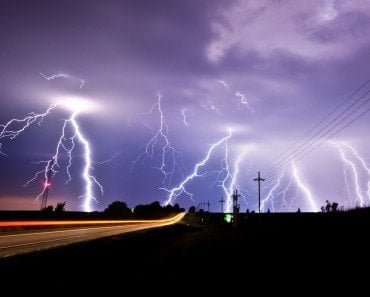Table of Contents (click to expand)
The songs of the dunes are triggered by sand avalanches. The dune layers further amplify these sounds and they reach us as an ominous hum.
“There is a marvellous thing related of this desert, which is that when travellers are on the move by night, and one of them chances to lag behind, he will hear spirits talking.
Even in the day time one hears those spirits talking. And sometimes you shall hear the sound of a variety of musical instruments, and still more commonly the sound of drums. Hence in making this journey ‘tis customary for travellers to keep close together.”
– Marco Polo (The Travels of Marco Polo)
Deserts have always been considered eerie and strange places, and this excerpt from Marco Polo’s 13th-century travelogue adds to that enigmatic tradition. Besides Polo, many explorers including Charles Darwin and Babur have reported hearing humming spirits and ominous chants in the deserts. Even today, whirring melodies that resemble musical notes can be heard in several deserts across the world, but unlike the legend, these sounds are not caused by spooky spirits.
The mystic singers of arid deserts are the dunes that spread across its vastness.
But what makes the sand dunes sing?
For a long time, people have shrugged off the singing dunes by saying, “it must be the wind,” but the secret to the sound is not that simple.
Recommended Video for you:
Sand Dunes
Dunes form when sand, carried by the wind, pile up on a large scale. Depending on the shape of the pile, dunes come in different types. They range from the crescent-shaped barchan dunes to linear, parabolic, dome, and star-shaped dunes.
Certain sand dunes produce a distinct low-frequency rumble defined as ‘singing’, ‘humming’, or ‘booming’. What makes them special is that these sounds resemble the musical notes of a cello or the droning sound of an aircraft. These songs can last for minutes and can be heard up to 10 km away.
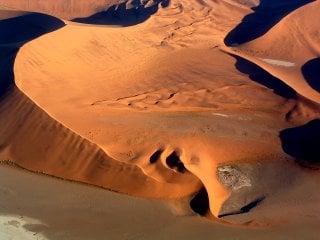
How Does A Dune Sing?
The science behind singing sand dunes has been a topic of intense debate over the last few decades. There have been many theories that associate the sand songs with the nature of the wind, the size of the grain particles, the landscape of the deserts, and the structure of the dunes, but most of them fail to explain all the questions related to the booming.
What initiates the booming? How can it be audible that far away? Why does the sound resemble musical notes? And why don’t all dunes sing?
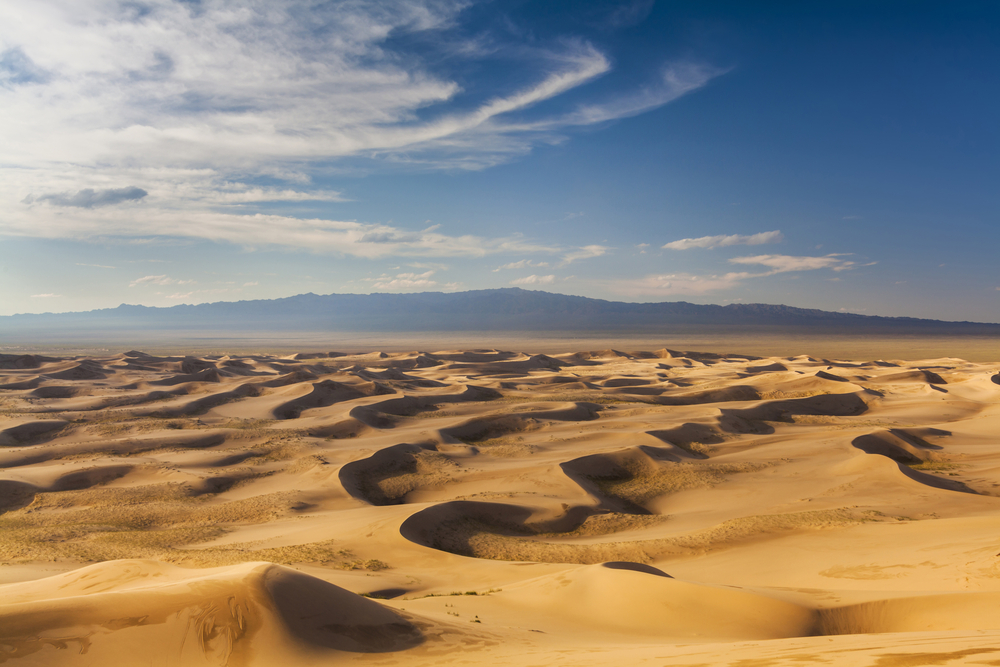
Why Don’t All Sand Dunes Sing?
Not all dunes are good singers. The dunes must satisfy certain conditions for them to produce these rolling sounds.
- Firstly, the sand must be super dry, which is pretty easy to achieve in a desert. However, even tiny amounts of moisture or humidity can muffle the dunes.
- The sand particles must have a uniform size (average diameter of 200 μm). This condition is met by the wind. The wind always tends to lift particles within a certain size range, acting as a sieve for the sand.
- The sand particles must be spherical and smooth. Quartz sand is known for its rounded, polished structure, so booming has been observed predominantly in dunes containing a large amount of quartz.

What Makes The Dunes Sing?
Sand dunes are not stable structures. They consist of a rigid inner layer of closely packed sand topped by a layer of loose sand that can be around 1-2m thick.
A typical sand dune can only rise to a certain height and slope. When it exceeds that limit, the sand begins to slide down the dune, resulting in an avalanche. These avalanches trigger the natural booming of dunes.
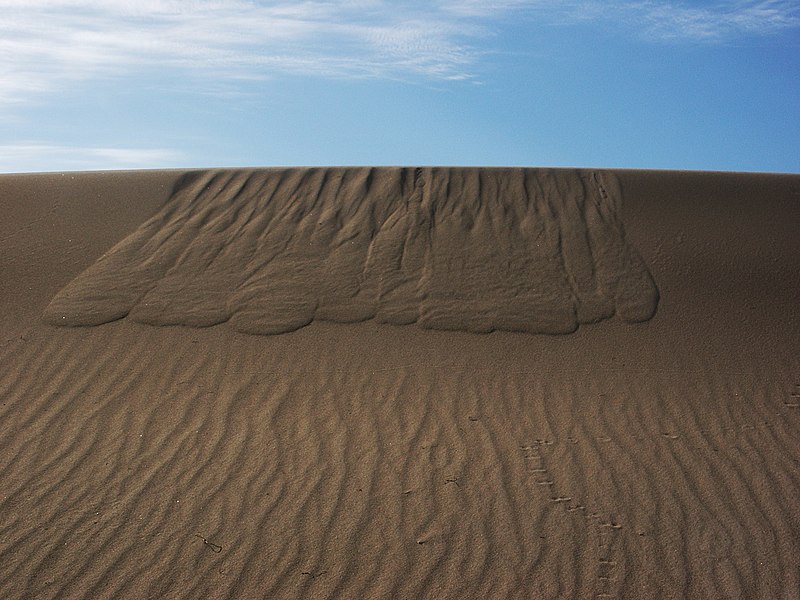
Sometimes, we can also induce them by sliding down the slope of a dune.
But how does sliding sand result in a musical hum? To understand that, let’s consider the analogy of a violin or cello. How does rubbing over a couple strings produce music? Through the interconversion of energy.
When we glide the bow of a violin over the strings, friction from the bow makes the strings vibrate, i.e., frictional energy gets converted into vibrational energy. This energy gets transferred to the wooden body of the violin.
Within the wooden body is a cavity, which enhances a particular frequency from the vibration by resonance. Thus, the sound waves of a specific frequency build up and amplify within the cavity. Finally, the sound wave is transferred out into the air by the wooden body and we hear it as music when the waves reach our ears.
Something similar happens within a dune, but on a much larger scale.
Science Behind Singing Dunes
During an avalanche, the uniformly sized sand grains rub against each other. This shearing of grains produces frictional energy, similar to the bows of the violin. Also, when the sand slides down from a height, the potential energy of the sand gets converted to kinetic energy, which also acts as an additional energy source.
The energy from the avalanche makes even more sand particles vibrate, so the frictional and kinetic energy gets converted into vibrational energy within the sand. This results in the generation of short pulses of sound called ‘burps’.

Remember the mention of ‘drum sand’ in the movie Dune? When Paul accidentally steps on patches of drum sand, the sand amplifies the sound of his steps, thereby attracting the sandworm to him. Like the drum sand of Arrakis, our singing dunes transform the short burps from the avalanche into a loud, long hum.
The Waveguide Theory
A waveguide, as the name suggests, is something that guides a wave. When you were little, you probably noticed that using a cardboard tube to speak into the ears of your friend made you sound louder and better. This is a classic example of a waveguide. It prevents the sound waves from escaping to the external environment and amplifies them via internal reflection.
The thickness of the waveguide determines the frequency that it primarily amplifies. If the waveguide is too narrow, it cannot propagate the sound.
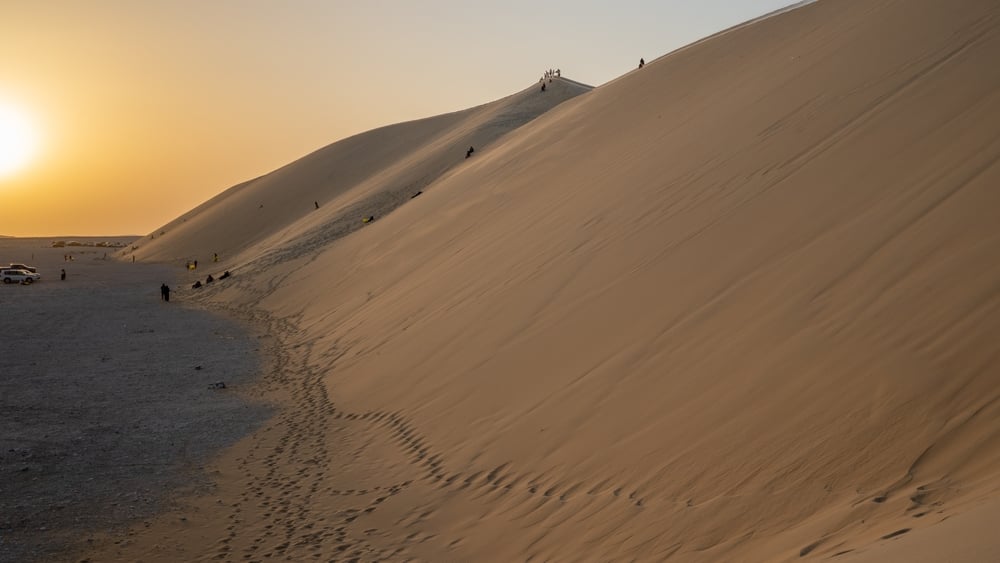
According to the waveguide theory by Nathalie Vriend and ML Hunt, the loose layer of sand that is sandwiched between the atmosphere and the rigid subsurface layer of the dune acts as a seismic waveguide.
The cavities in the loose sand layer (like the cavity of a violin), excite a particular frequency from the burping emission, thus setting and initiating the distinct roll.
The solid sublayer of the dune reflects the waves and prevents their dissipation. Thus, the sound gets amplified on a large scale within the sand and finally moves out into the atmosphere as a ‘song’.
Conclusion
Thus, the shearing sand instigates the sound, the ‘waveguide’ sets the frequency, the hard sublayer amplifies the signal, and finally, the surface of the dune lets the song out into the atmosphere like a loudspeaker.
This theory also explains why the sound produced by each dune is distinct and why all dunes don’t sing.
Depending on the thickness of the sand layer, the amplified frequency varies, and at some thicknesses, no frequency is enhanced. The dune songs usually occur within a frequency range of 70-105 Hz.
Similarly, the sand must be dry, as wet sand is compact and alters the layering of the dune. Also, the presence of uniform, spherical grains provides better shearing.
Thus, out of all the theories put forth so far, the waveguide theory is the one that provides the most closure to the science behind the phenomenon.
The singing dunes are essentially giant musical instruments created and played by nature. The lingering songs of the desert have inspired artists and scientists alike. Hearing the rumbling dunes will surely haunt and stir your mind in a lonely desert… no wonder ancient travelers were led astray by this mystical hum.
References (click to expand)
- Polo M. (1845). The Travels of Marco Polo. Harper & brothers
- NM Vriend. Booming Sand Dunes. The California Institute of Technology
- Vriend, N. M., Hunt, M. L., Goddard, J., Giovine, P., & Jenkins, J. T. (2010). The waveguide theory for booming sand dunes. AIP Conference Proceedings. AIP.
- (2010) Booming Sand Dunes - Oregon State University. Oregon State University
- G Poljšak —. Singing dunes - Department of Theoretical Physics. The Jožef Stefan Institute
- An introduction to violin acoustics - W. The University of New South Wales
- The Feynman Lectures on Physics Vol. II Ch. 24: Waveguides. The Feynman Lectures on Physics
- The Feynman Lectures on Physics Vol. II Ch. 24: Waveguides. The Feynman Lectures on Physics



